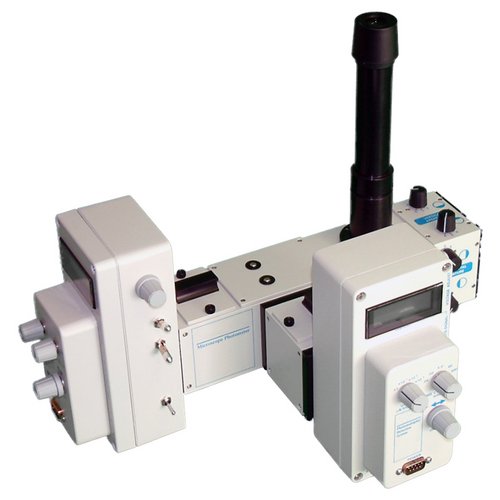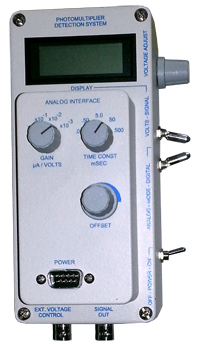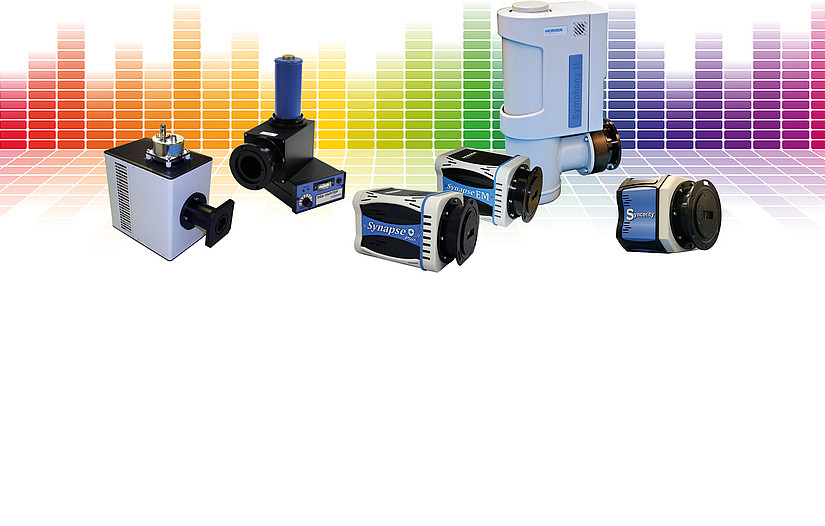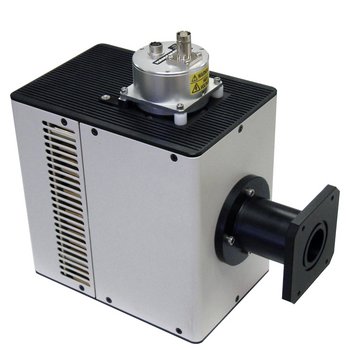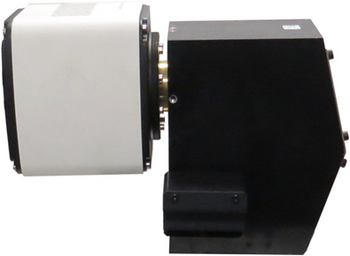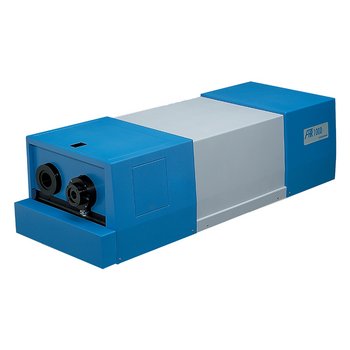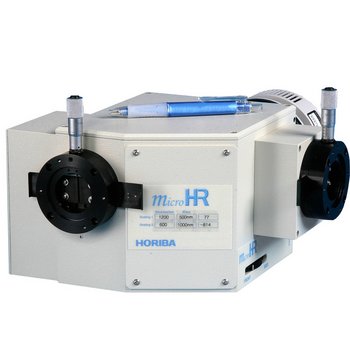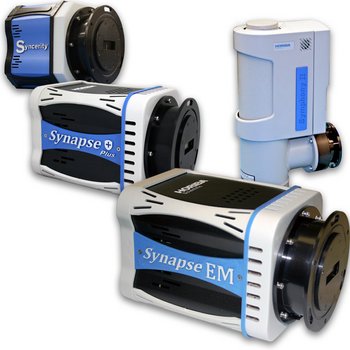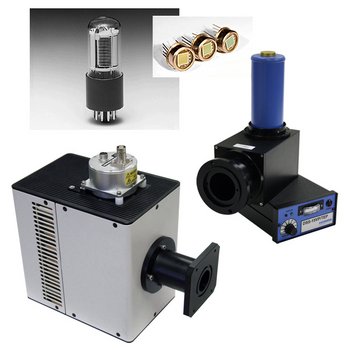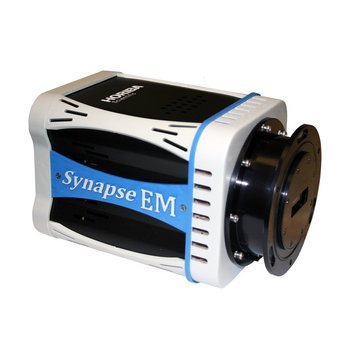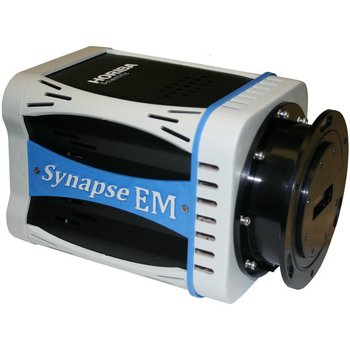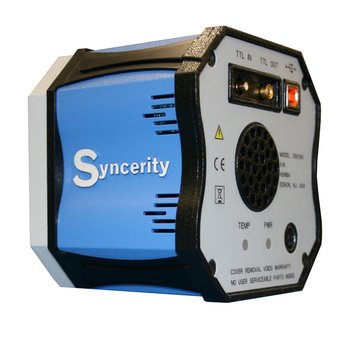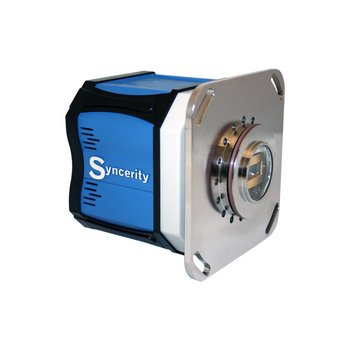Originally Designed for Intracellular Ca++ Research

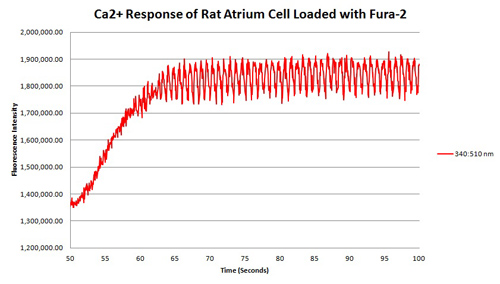
The photometer was developed by Photon Technology International (PTI) with over 1,000 installed systems around the world. PTI is the pioneer in the quantitative ratio fluorescence marketplace having introduced the first patented ratio fluorescence system, the Deltascan™, shortly after the first Fura-2 publication.
Simultaneous measurement of Ca2+ and myocyte cell length with dual emission photometer
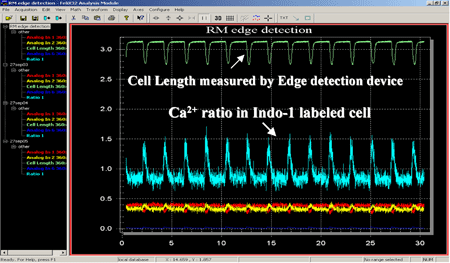
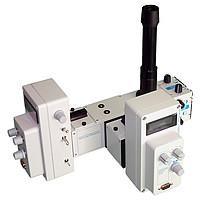
Dual emission channel photometer for Indo-1 Ca++ measurements
The above data traces are from the simultaneous collection of fluorescence and cell length from a cardiac myocyte. Myocyte was loaded with dual emission ratiometric fluorescence probe Indo-1. The DeltaRAM illuminator was used for excitation illumination at 365 nm and the emitted fluorescence was detected with a dual emission PMT photometer. Above data was collected with FeliX32 photometry software from Photon Technology International (PTI). The blue trace shows the calcium ratio increase and decrease with the cell contraction. The contraction data (Green trace) was detected with a video edge detection electronics module and is correlated with the fluorescence data since both signals were collect simultaneously.
Ideal for Patch Clamp Electrophysiology Research
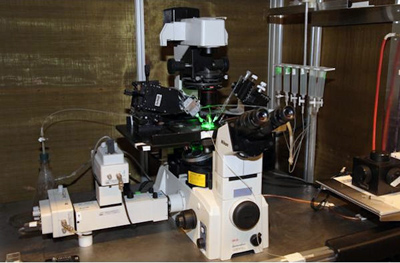
Image courtesy of, Prof. Dr. György Panyi, Department of Biophysics and Cell Biology, University of Debrecen
Shown is a picture of a PTI/OBB dual emission photometer attached to the C-mount of an inverted fluorescence microscope. The microscope is also equipped with electrophysiology recording devices and perfusion apparatus. The entire setup is inside a Faraday cage for electrical isolation.
HORIBA's photometers are ideal for quantitative live cell measurements of intracellular ion and molecules such as Ca++, Na++, pH, GFP, FRET and FRAP experiments. By allowing for simultaneous quantitative fluorescence detection with patch clamp recordings, these photometers have been widely used by electrophysiologists around the world. The PMT photometer is a passive detection system that provides an output voltage signal proportional to the ion/fluorophore of interest, and this signal is directly fed into the electrophysiology A/D converter and collected with the customer’s existing software. The PMT photometer can collect a fluorescence signal at up to 20 KHz for high speed transient recordings.
Other key applications for the PMT photometer
While the PMT photometer was initially designed for demanding low light level fluorescence detection, it is extremely well suited for a variety of other microscopy applications including the following.
- Vitrinite coal reflectometry
- Nanoparticles
- Quantum dots
- Materials research
Key features of the PMT photometer
- Very low cost and very easy to operate
- Couples to any microscope C-mount
- Analog PMT output signal connects directly to BNC input on any DAC (no software is required)
- Analog signal LCD display provides light measurement without A/D or software
- PMT detection is 10,000 times more sensitive than a photodiode for low light level detection
- Wide spectral range from the UV to the NIR.
Accessories
Backlit Option
The standard viewing eyepiece can be replaced with an optional backlighting LED to allow the user to set regions of interests without ever needing to move from the microscopes eyepiece.
With this option the LED then illuminates the field of view through the adjustable iris. You can then look at the field of view through the microscope eyepieces and adjust the LED lit square or rectangle with the edges of the targeting iris.
Adjustable Pinhole Option
For some applications like single molecule detection you may need to detect from precisely known physical areas in the field of view. For such applications having a variable iris is not sufficient, so there is an optional pinhole insert that replaces the adjustable iris
The pinhole assembly is a mechanical insert that goes in place of our standard aperture blade assembly. There is a one-inch diameter holder for laser cut pinhole apertures with holes that can be selected from 5 µm to 200 µm in diameter (select from list). The pinholes are positioned in the focal plane of the microscope and can be translated +/- 3 mm from center with easy to use micrometers.
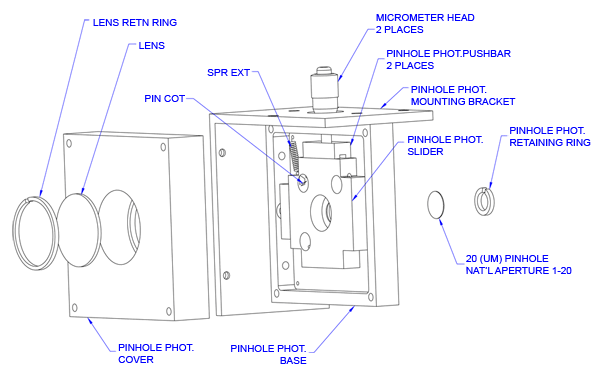
Since the pinholes are so small in diameter, the only way to target through them is by backlighting the pinhole with our backlit LED option and visually aligning them in the field of view through the eyepieces of the microscope. The user can target a specific region of interest for the photometer to measure by using the X/Y translation on the pinhole insert or by moving the stage of the microscope.
Dual Emission Dichroic Cubes
The multi channel microscope photometers are designed to hold standard 18mm dichroic cubes, with 18 mm circular bandpass filters and an 18 x 26 mm dichroic mirror. Currently we offer three standard application specific dual emission cube assemblies that include two emission filters and an appropriate dichroic mirror. Custom filters and dichroics may be purchased separately.
Standard dual emission cubes
- Dual emission Ca++ indicator, INDO-1 cube with emission bandpass filters for 405 and 485 nm
- Dual emission pH indicator, SNARF cube with emission bandpass filters for 580 and 640 nm
- Dual emission FRET® cube with emission bandpass filters for 535 and 610 nm
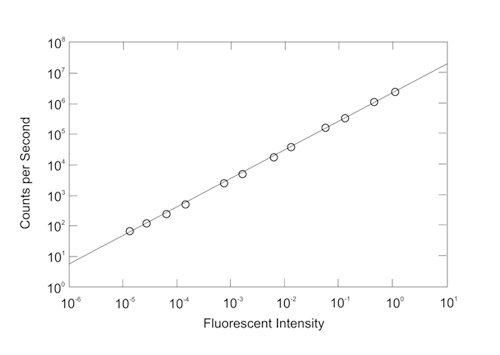
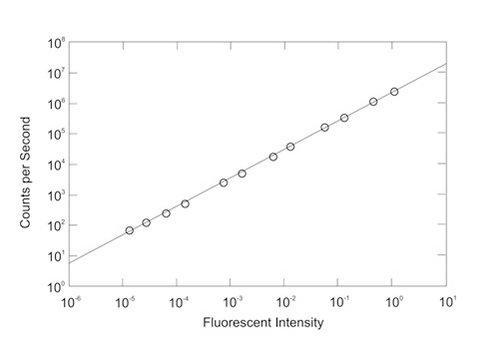
 This product has been discontinued and is no longer available. You can still access this page for informational service purposes.
This product has been discontinued and is no longer available. You can still access this page for informational service purposes.
